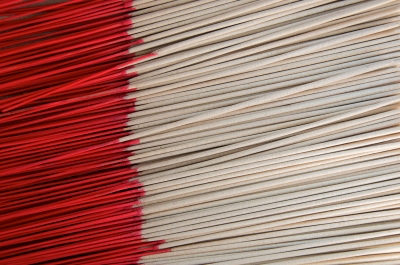herbal potpourri
How the Fragrance of Incense Spreads
What goes around, comes around, or so it would seem. Almost from the beginning of time, people have extolled the virtues of aromatic herbal incense as a means of quieting the mind's chatter and achieving a state of peace and serenity. Incense use crosses all cultural boundaries. For example, today, many suburban homemakers create mixtures of herbal potpourri. Not content to purchase bagged potpourri, they personally collect and dry petals from their own rose bushes, carefully pinching off pretty buds and in some cases, whole flowers. Once dried, they display them in pretty bowls, and maintain their fragrant aroma with essential oils. Across the world, Buddhist monks practice related arts.
In the tumultuous decade of the 1960s, herbal incense enjoyed a surge in popularity as the nation's rebellious youth discovered its charms. Loose incense, cones and sticks were sold in head shops across the country, right alongside the paraphernalia for illegal drugs. Incense comes in a plethora of aromas, and at now as then, patchouli was particularly favored. Even now, there are many who associate the scent of patchouli with hippies and flower children, psychedelic drugs, the sexual revolution, and counterculture in general.

The inclusion of incense in religious rituals dates back to antiquity. While the Babylonians were perhaps the first to incorporate incense into their worship traditions, the use of ignitable fragrance spanned several Chinese dynasties. The practice came to Japan via Buddhist monks from Korea, and is an established part of nearly all eastern cultures and religions. In the west, incense has been used in Catholic church liturgy for centuries. Although incense may have originally come to an area via the temple or the church, it quickly found a place in personal dwellings, too.
The enjoyment of fragrant aroma is clearly common to all people, for wherever incense-burning people have traveled, new converts to the enjoyment of incense have been left behind. There has been a tendency throughout history for people to create incense from resources indigenous to an area. For example, Native Americans often employed fragrant plant materials such as cedar, sage and rosemary. Nearly any aromatic plant or herb can be used in incense making. Pine, sage, sandalwood, sassafras, rose, lemongrass, and thyme are popular choices. Usually, plant material is dried, ground, and combined with resin. The resulting mixture can be burned as loose material (which requires a heat source, such as saltpeter-free bamboo charcoal), or it can be shaped into a cone or coil. Commercial incense products are available from Internet sites such as incenser.com.